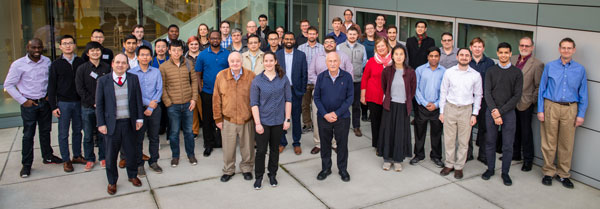Physicists keep an eye on Nobel prizes; mathematicians, the Fields Medal. Inventors of useful programs and devices get their own moments of recognition when the R&D 100 Awards are announced each fall.
The contest — held and published annually since 1963 — is sometimes referred to as “the Oscars of invention.” The winning lists are created by teams of examiners identifying the 100 most technologically significant products each year from an international pool of submissions sent in from government labs, universities and private corporations. The contest is sponsored by R&D World Magazine, the successor to R&D Magazine.
This year, Sandia researchers earned six awards — three as sole winners and three with partner organizations — bringing Sandia’s total to 140 awards since 1976.
Individual awards
HECATE: High-density Evaluator of Commercial-off-the-shelf Applications for Trust and Efficacy
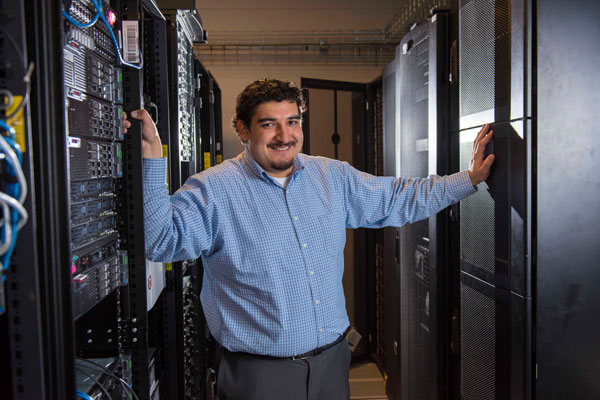
Principal Investigator: Vince Urias
The number of software supply-chain attacks has grown to an unprecedented degree over the past decade. HECATE, a software supply chain and assurance platform, reduces risks for commercial and open-source software users. The platform addresses these threats by creating virtual machinery modified to resemble physical devices. Selected software, along with patches and updates, are then installed and automatically observed in performance from the virtual machine.
The platform distinguishes between benign, anomalous and suspicious behaviors. Intruders set off an alarm if they include an unrequested update that changes a program’s behavior or requests access to privileged features in the user’s system. HECATE provides a testing ground that attackers can’t detect and therefore can’t lie to, offering a yardstick to determine how much trust to accord a new addition.
Binary Solvent Diffusion for Fabrication of Large Nanoparticle Supercrystals
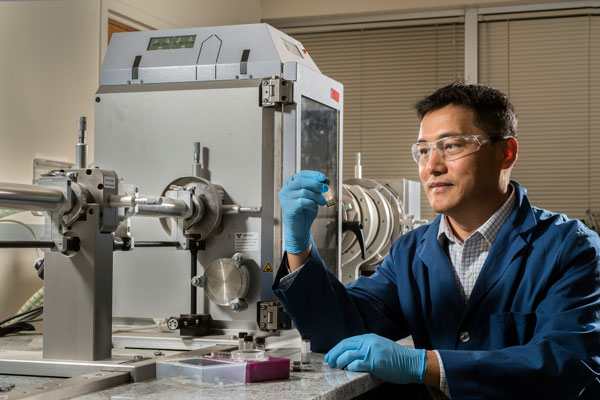
Principal Investigator: Hongyou Fan
Researchers used nanotechnology and chemistry to self-assemble gold nanoparticles into millimeter-sized supercrystals that are very sensitive to chemical traces. Electromagnetic fields within the supercrystals produce superior sensing that correlates to the shape, size and density of packing.
An inexpensive, large-scale production method uses a simple solvent diffusion process for seeding and growth. The supercrystals obtained through this process also proved to have superior qualities in optoelectronics, photovoltaics and surface catalysis.
Supercrystals: Watch the video.
Tracktable
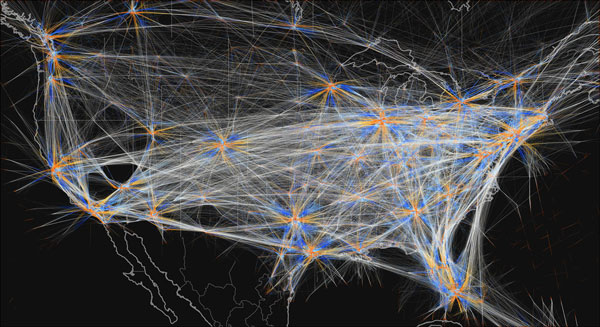
Principal Investigators: Danny Rintoul, Andy Wilson, Chris Valicka
Tracktable applies advanced machine-learning techniques to large trajectory data sets, searching for shapes and patterns in space and time by providing a mathematical framework. The method organizes, searches and quickly analyzes millions of patterns, grouping similar shapes and extracting unusual trajectories without first requiring a definition of the term “normal,” which might eliminate from consideration shapes worth studying.
By treating time as a variable similar to space, Tracktable enables searches for collective behavior and patterns over long periods of time. Fast search techniques predict paths and destinations of moving objects by comparing observed paths to historical databases of trajectories.
Finding the patterns in big data: Watch the video.
Joint awards
Legion: A Data-centric Programming System
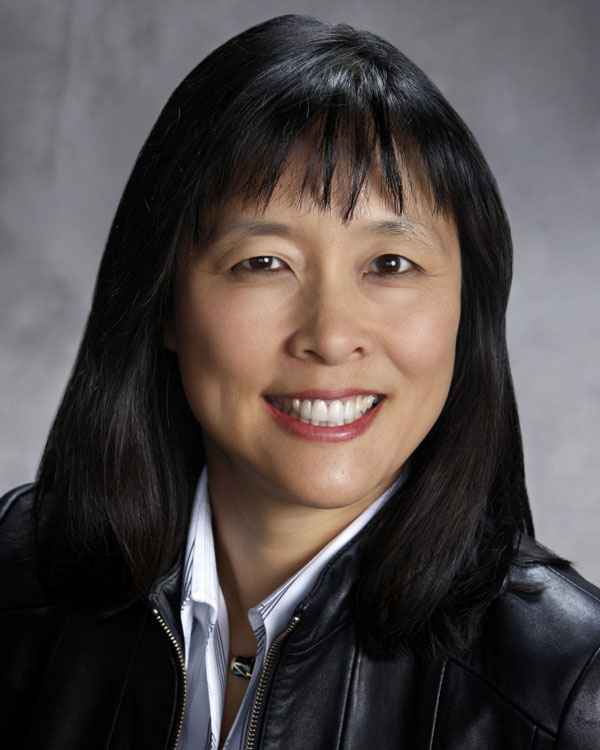
Lead organization: Los Alamos National Laboratory
Partner organizations: NVIDIA, University of California, Davis, Sandia National Laboratories, Stanford University, SLAC National Accelerator Laboratory
Sandia lead researcher: Jackie Chen
Legion is a supercomputing programming system that boosts application performance and speed by automating task scheduling and data movement. This type of automation is a basic need for computing at the exascale — performing a billion billion operations per second.
At Sandia, scientists used Legion to boost the performance of a complex multi-scale physics simulation known as S3D, a turbulence-reacting flow solver used to develop predictive models of better internal combustion engines. Legion enabled calculations capturing turbulence-chemistry interactions that were previously out of reach for S3D as well as scaling to over 10,000 nodes on the Titan supercomputer at the Oak Ridge Leadership Computing Facility, reducing the time to achieve results.
Performance Boost: Watch the video.
XRPBS: X-ray Polarizing Beam Splitter
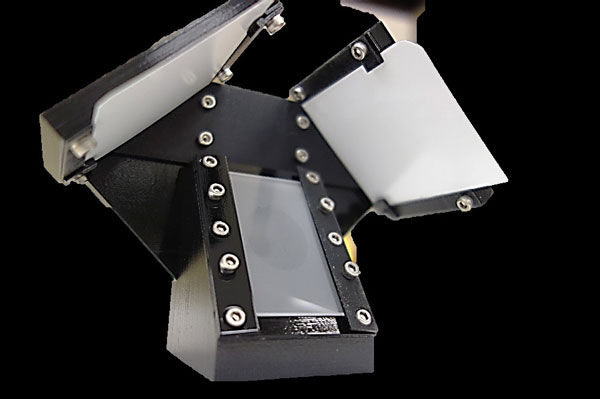
Lead organization: Nevada National Security Site
Partner organizations: Sandia National Laboratories, Argonne National Laboratory, EcoPulse
Sandia lead researcher: Ming Wu
XRPBS is the first X-ray polarizing beam splitter. It separates an X-ray beam in two in order to measure each polarized beam simultaneously, a unique feature because it eliminates reliance upon source stability or repeatability. This diagnostic can be used for high-energy-density plasma investigations in addition to weapons-related work. It also can be used for material studies and X-ray beam manipulation on synchrotrons.
Measuring the polarization of X-rays provides information about electron beams and magnetic fields in X-ray emitting plasmas. The same process can analyze the magnetic properties of materials probed with radiation from advanced X-ray sources.
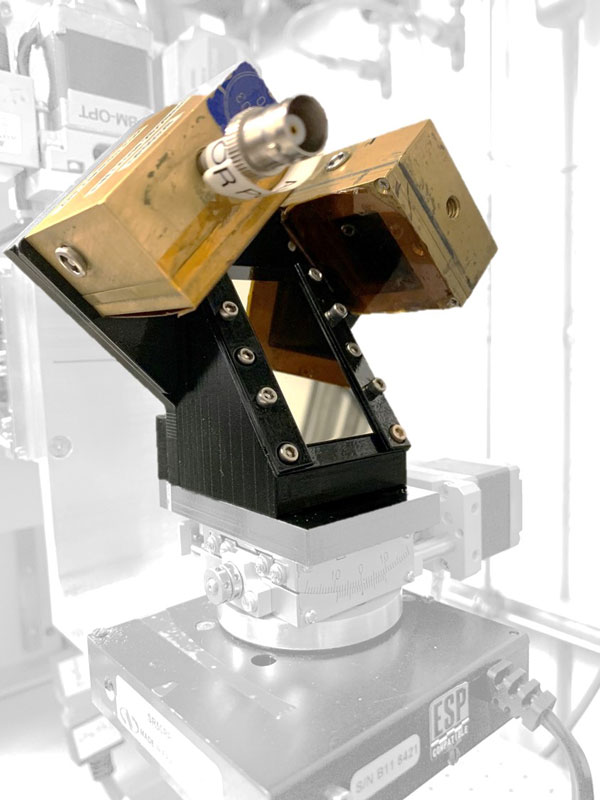
XRPBS does this in a simple and accurate way by taking advantage of the simultaneous diffraction of an X-ray beam on pairs of internal planes in crystals with three-fold symmetry — a condition where rotating the crystal by 120 degrees around an axis produces an atomic arrangement indistinguishable from the original one.
When the X-ray beam is incident at the correct angle on two internal crystal planes, the diffraction process produces two beams perpendicular to the incoming one and to each other, and which have mutually orthogonal linear polarizations.
XRPBS was developed by Radu Presura at the Nevada National Security Site in collaboration with Sandia, and its development was supported by Argonne National Laboratory. Sandia collaborators led by Ming Wu participated in the discussion of applications and in the crystals’ characterization.
IDAES: Institute for the Design of Advanced Energy Systems Process Systems Engineering Computational Framework
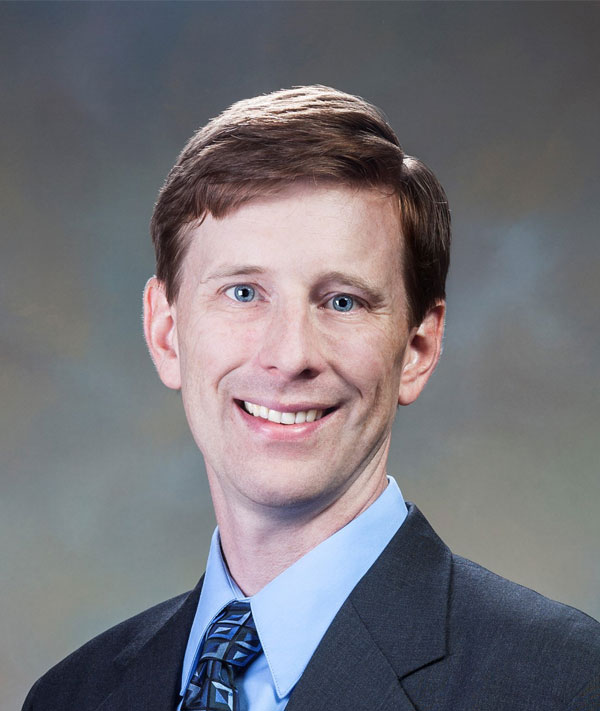
Sandia Principal Investigator: John Siirola
Partner organizations: U.S. Department of Energy, National Energy Technology Laboratory, Carnegie Mellon University, Lawrence Berkeley National Laboratory, University of Notre Dame
This framework is a comprehensive set of Process Systems Engineering tools supporting the design, modeling and optimization of advanced energy systems. By providing rigorous modeling capabilities, the IDAES Modeling & Optimization Platform helps energy and process companies, technology developers, academic researchers and DOE to design, develop, scale up and analyze new and potential PSE technologies and processes to accelerate advances and apply them to address the nation’s energy needs.
John Siirola, Sandia project lead, said the IDAES Integrated Framework is based on and extends a Sandia-developed open-source modeling environment called Pyomo.
IDAES has taken the core optimization capabilities in Pyomo and not only built a domain-specific process modeling environment, but also expanded the core environment into new areas, including logic-based modeling, custom decomposition procedures and optimization algorithms, model predictive control and machine learning methods.
“Perhaps the most exciting aspect of working on IDAES is how tightly integrated our team is,” John said. “We have the privilege of working with some of the leading researchers in the field and have experts from all member institutions each engaged in virtually all aspects of the program.”
